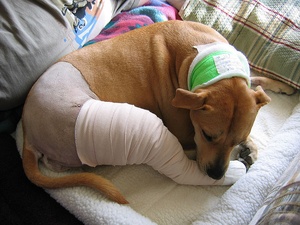Rickie Roo, well-known star in the world of dog agility is also known for her canine philanthropy, recognized by the American Kennel Club as an Award of Canine Excellence (ACE) award honoree for her educational and charitable efforts.
This spunky 7-year-old Rat Terrier is an exceptional athlete and is ranked among the best in her sport, earning her titles Master Agility Excellent and Master Excellent Jumpers With Weaves. These titles were needed for Rickie Roo to qualify for this year’s Westminster Kennel Club Dog Show Masters Agility Challenge event. Despite having a visual impairment due to both lenses needing removal because of primary lens luxation (PLL), she will be competing on February 14th (show airs on 2/15) at Westminster.
In the sport of dog agility, just like in the Olympics it is important to be in tip-top shape and able to perform at your best. Which is why her breeder, Barbie Trammel and her owner and trainer, Deborah Davidson-Harpur had Roo’s DNA tested for an inherited mutation that causes lens dislocation in several breeds. PLL is caused by a mutation that affects the ligaments that holds the lens of the eye in place. When those ligaments ...



